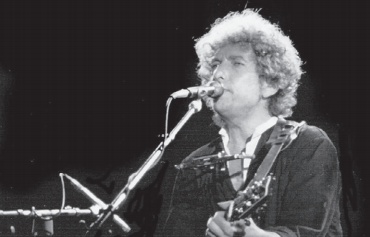Bob Dylan’s Bootleg Series 12 covers his Holy Trilogy of albums during 1965-66: Bringing it All Back Home, Highway 61 Revisited and Blonde On Blonde, spanning his progression from folk to electric as he popularised the bohemian spirit of Beat Poetry and fused with American Blues.
The series is released in several editions, ranging from the twodisc highlights, to a more expansive six-disc compilation, to the limited edition eighteen-disc deluxe boxset which includes every second that Dylan recorded in the studios. Dylan’s method of recording alternative versions of each song live with a band was rare at the time, and each one creates a unique mood with the slightest variations in tempo, instruments and lyrics.
On the final version of Bringing It All Back Home, side one is electric while side two is acoustic, demonstrating Dylan’s conscious decision to embrace electric instrumentation after bringing folk music to popular mainstream attention. The title points the path back to contemporary American music and Dylan’s use of electric amplified instruments was not revolutionary, as Muddy Waters, Robert Johnson and all the other masters of the Blues tradition, who Dylan was inspired by, had already played and recorded on electric guitars. The track ‘Subterranean Homesick Blues’ combined music inspired by Chuck Berry’s ‘No More Monkey Business’ with poetry inspired by the Beats’ spontaneous writing, while the simple structure and lyrics of ‘Maggie’s Farm’ show Dylan nodding to the protest movement and social activism. What the Bootleg Series reveals is the speed with which Dylan’s writing and recording happened: Bringing It All Back Home, which displays a stunning range of songs, was recorded entirely in 2 days, with a number of classics (‘It’s All Over Now’, ‘Baby Blue’, ‘Gates of Eden’, ‘Bob Dylan’s 115th Dream’ and ‘Maggie’s Farm’) effectively released in just one take.
Just a few months later, Dylan was back in a New York studio recording the legendary ‘Like A Rolling Stone’, which many now regard as the real birth of contemporary rock music, as well as the rest of the songs that make up Highway 61 Revisited. Dylan by now has completed his metamorphosis into an electric musician. Working at a relentless pace, he forms a blues sound that is forged with the then wunderkid electric guitarist of the day, Mike Bloomfield from America’s premier Blues band, the Paul Butterfield Blues band.
The result of this album’s handpicked band’s raucous playing is a sound that is uncompromisingly raw and yields a record which proved to be the inspiration to push other leading bands of that time, such as The Beatles, The Rolling Stones, Cream, and eventually The Jimi Hendrix Experience, to seek greater musical soundscapes and more visionary lyrics. Under new producer Bob Johnson, Dylan was guided to open contemporary popular music to an entirely new world, with the continuing influence of the Beat Poets, such as Ferlinghetti, now mixed with French troubadours such as Arthur Rimbaud.
After Highway 61 Revisted, Dylan returned to the stage with an arduous world tour, as one of the world’s most sought after artists, yet his determination to play the music as he wished it to be played and not to pander to his audience continued. After the infamous scenes at 1965’s Newport Folk Festival, where Dylan’s folk audience was shocked into booing amidst the pandemonium that ensued as his electric songs were first performed live. Undeterred, Dylan continued like a man possessed, clearly on medicated highs and always hidden behind dark glasses, to lead a life that was artistically on the edge and pushing the boundaries ever further. The result of this hard living are perhaps his most artistically enigmatic works – the lyrically brilliant and ‘thin wild mercury sound’ which Dylan finally recorded as Rock’s first double album: Blonde On Blonde.
After an initial attempt to record with his current tour band The Hawks (later to become The Band) in New York, producer Bob Johnson finally persuaded Dylan to jump ship and move to Nashville and use the house bands there. This proved to be a masterstroke in terms of the eventual, sound and feel that Blonde On Blonde became. However, the cutting edge does reveal what a different and still interesting album would have been produced had he stayed loyal to the original New York sessions. This is no more apparent than with the various versions of ‘Visions of Johanna’ now made available. Dylan and The Hawks’ attempts at this most complex of relationship songs is a danceable rock, near-punk rendition, which clearly is a revelation. Indeed it matches the final released version although they are separated in releases by fifty years.
The Bootleg Series unveils a time and period of Dylan’s recording history which many regard as his most creative period. For Dylan fans everywhere, the secrets of his recording sessions during this hectic period are now made available for all of us to enjoy. Dylan’s personal and artistic life suddenly changed at the end of the Blonde on Blonde’s release in 1966, when he was reported to have had a life-threatening motorcycle accident. Whether that accident actually happened or not (or was a convenient excuse for Dylan to take a break from his punishing recording and lifestyle) is still unclear. What is clear is that when one considers other artists that occupy the same space as him in the contemporary music arena, Bob Dylan’s artistic output during 1965-1966, even in hindsight fifty years later, remains legendary and unmatched.

